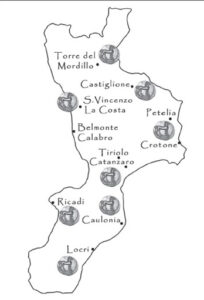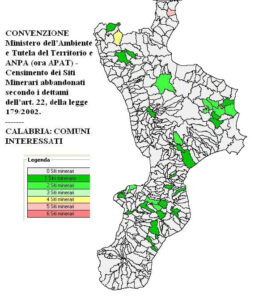The geophysical characteristics of the extreme tip of Calabria have contributed to it being considered from the earliest times as a sort of bridge in the economic, commercial, and cultural traffic between the East and the West. It is no coincidence that Calabria was at the centre of the epic of Ulysses, that it was the point of arrival and departure of the Greeks for the conquest of the West, that it was among the commercial interests of Carthage and the military interests of Hannibal, for the enormous mineral, forestry, and human wealth of the Locride area in particular.
The exploitation of the land seems to have been a fundamental objective of the Greek, Punic and Roman presence, being at the same time a point of strength and potential wealth of the local population.
The iron, copper, and silver mines of Serre Calabre, inland from Caulonia, have been known since prehistoric times. The Romans founded a colony for the damnati ad metalla in the Stilaro valley, between Pazzano and Stilo, near the limonite mines. It is precisely in Pazzano that seven Carthaginian coins in electrum were found together with eight Syracusan specimens in a treasure chamber dating back to 300 BC.
The findings of electrum at Gioiosa Jonica and Mammola, which are also associated with the Locride and Aspromonte mining basins, rich in blende, galena, and chalcopyrite, could also fall within the same framework.
It is also interesting to note the discovery of Punic coins in the electro of Acquaro, which seems to indicate knowledge of the overland route linking the Ionian and Tyrrhenian coasts, as documented by the finds from Reggio Calabria and Gioia Tauro. The southernmost of the two isthmuses is the one between Locri and Gioia Tauro, which separates the Aspromonte from the Serre and the latter from the Catanzaro Sila.





